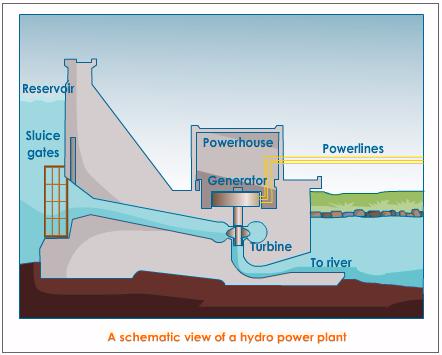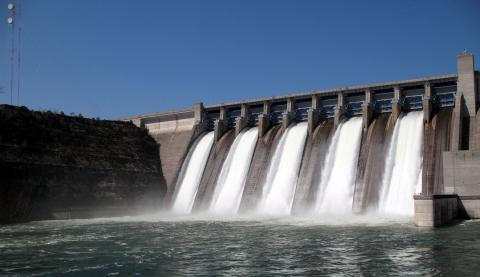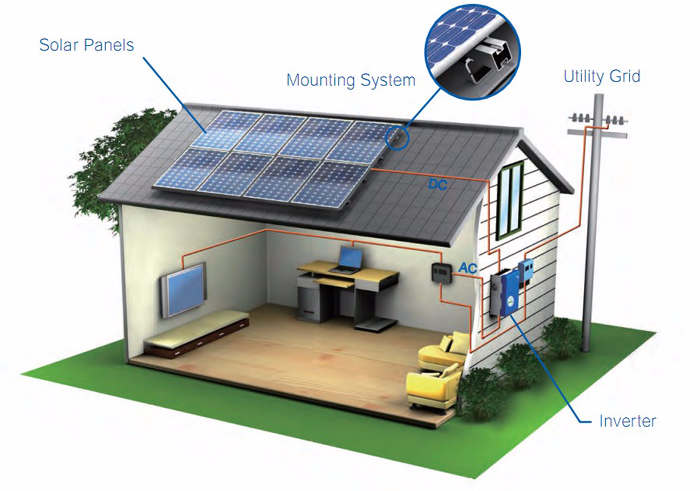SUSTAINABLE ENERGY SOURCES
- Get link
- X
- Other Apps
TOPIC 9: SUSTAINABLE ENERGY SOURCES
Sustainable energy, specifically renewable energy or green energy, is an energy source which can be replenished, that is essentially inexhaustible. Sustainable sources of energy include solar, wind, water, biomass and geothermal. Non renewable energy sources include coal, oil and natural gas.
Water Energy
The Generation of Electricity from Water
Explain the generation of electricity from water
Energy sources are areas of origin of a particular kind of energy. There are two types of sources of energy namely:
- Renewable sources
- Non- renewable sources
Renewable sources:These are the energy sources, which can be turned into use again after being used. Example sun, water, wind and fossils.
Non- renewable sources:These are the energy sources, which cannot be turned into use again. Examples: oil, natural gas and charcoal.
Sustainable sources of energy:This refers to natural resources that are used in the production of electricity without destroying the environment. These include:
- Solar energy
- Wind energy
- Sea/wave energy
- Geo-thermal energy
- Tidal energy
Water energy refers to the energy obtained from running water by use of turbines and generators. This energy is called hydroelectric power.
Hydroelectric Power (H.E.P):This is electricity produced by running water.Hydroelectric power stations provide about 20% of the world’s electricity. In Tanzania, hydroelectric power stations/plants are found at Mtera, Kidatu and Nyumba ya Mungu.
Production of hydroelectric power
First, a dam is built to trap running water. This is usually in a valley where there is an existing lake. Water is allowed to flow through tunnels in the dam, where they turn turbines, which in turn drive generator.
The generator then produces electricity from water energy. Force of moving water thus turns the generators. Hydroelectric Power plants have no fuel costs and gives off no waste.
NOTE:
- The dam constructed is made much thicker at the bottom than at the top because the pressure of water increases with depth.
- Hydro electricity produces no waste products.
The Importance of Water Energy
Explain the importance of water energy
Water energy has the following importance.
- The energy is virtually available
- It is environmental friendly
- It is more reliable than other sources like wind
- Electricity can be generated constantly
- The energy increases power very quickly
Application of energy from water
- In Industries - to drive machine parts
- Lighting purposes for example in homes
- Heating and cooking
- In health facilities i.e. runs incubators and freezers.
A Model of HydroElectric Power Plant
Construct a model of Hydro-Electric power plant
A model of Hydro-Electric power plant


Solar Energy
Solar energy refers to the energy obtained from the sun by the use of solar cells. This energy reaches us through radiation from the sun.
The Sun as a Source of Energy
Explain the sun as a source of energy
We consume energy in dozens of forms.Yet virtually all of the energy we use originates in the power of the atom. Nuclear reactions energize stars, including our Sun. The energy we capture for use on Earth comes largely from the Sun or from nuclear forces local to our own planet.
Sunlight is by far the predominant source, and it contains a surprisingly large amount of energy. On average, even after passing through hundreds of kilometers of air on a clear day, solar radiation reaches Earth with more than enough energy in a single square meter to illuminate five 60-watt light bulbs if all the sunlight could be captured and converted to electricity.
The Conversion of Solar Energy to Electric Energy
Explain the conversion of Solar energy to electric Energy
The energy produced by the sun is more than we need. Solar energy can be converted to electricity by using solar cells or photo voltaic cells. The main surface of solar panel is dull black. This enhances the absorption rate of the radiant energy from the sun.
Applications of solar energy
Solar energy has been harnessed by mankind and put to several uses. Below are some of the applications of solar energy:
- It is used in electric appliances such as television and radios
- For lighting purposes
- Spaceship satellites use solar cells
- Some torches, cars and calculators are powered by solar cells
- Drying of clothes and farm (food) products.
- Heating water using a solar hot water system
Though solar cells are expensive, they are very useful in remote and sunny areas.
A Model of Solar Panel
Construct a model of solar panel
A model solar panel

Wind Energy
Wind as a Source of Energy
Explain wind as a source of energy
Wind energy refers to the energy obtained from wind. It can be converted into electricity. Babylonians and Chinese used wind energy as a source of energy to pump water for irrigation 4000 years ago.
Wind energy can be converted into electricity by building a tall tower with a large propeller on top called windmill.
When wind blows, it rotates the propeller, which causes the attached generators to produce electricity.
Note: For more electricity to be produced, more properties are needed.
A Model of a Wind Mill
Construct a model of a Wind Mill
Wind mill is a machine used to convert wind energy into other forms like electrical and mechanical energy. The wind mill is operated by the kinetic energy of the wind. The kinetic energy in the wind rotates the blades of the turbines. This kinetic energy is then converted into other useful form of energy.

The Wind mill
A Wind Mill in Daily Life
Apply Wind Mill in daily life
Application of wind energy
For centuries, people have been using the power of the wind to move ships, boats and pump water.
Today, enormous wind energy is used to turn generators that facilitate the production of power. As windmills are efficient, very large turbines are required to providing the much-needed power.
Disadvantages of wind energy;
- Wind energy is not reliable
- Winds are variables
- The wind turbines are noisy and can spoil the landscape.
- Large windy sites are required
Sea Wave Energy
Sea Wave as a Source of Energy
Explain sea wave as a source of energy
The concept of sea water: Sea water around the world is continually moving. The wind causes ocean waves as it blows across the sea. These waves are powerful sources of energy. This can be used to drive generators.
The concept of tides: Tides by definition are the rising and falling of the ocean flow. Tides are produced by the gravitational pull of the moon and to some extent the sun. The change of water levels that the tides produce can be used as an energy source.
The concept of wave energy: The ocean waves are obtained when the surface of the ocean is disturbed by the blowing wind. The up and down movements of the surface water of the ocean is termed as ocean waves. Oceanic waves carry tremendous amount of energy. This energy is harnessed(extracted) and converted into other useful sources of energy.
The occurrence of waves in a swimming pool: Air is blown in and out of the chamber beside the pool; this makes the water bob up and down, causing waves.
The Conversion of Sea Wave Energy to Electric Energy
Explain the conversion of sea wave energy to electric energy
Electricity can also be generated from tides. As tide rises, water is allowed to enter the upper basin in the dam. Once the high tide has passed, the water on the upper basin is made to flow back to the lower basin through turbines in the barrage. The turbine turns generators, which convert seawater into electricity.
Water energy –is the energy obtained from running water by use of turbine and generators
Sea wave energy –Is the energy obtained from the series of swells of sea water.
Geothermal Energy
Geothermal as a Source of Energy
Explain Geothermal as a source of energy
The word “thermal” means “heat”, so geothermal energy is the heat energy generated by the flow of heat from the inside of the earth’s surface. It is the energy associated with areas of frequent earthquakes and high volcanic activity.
Areas like Kilimanjaro and Oldonyo in Tanzania; and Rift valley in Kenya are geologically well structured to produce efficient geothermal system. The hot spring can cause rocks to be hotter than the earth’s surface. Thermal energy is obtained from radioactive materials that naturally occur in the rocks.
The energy produced can be used in:
- Heating buildings
- Driving generators
- Heating water
The Conversion of Geothermal Energy to Electric Energy
Explain the conversion of Geothermal energy to electric energy
Energy is obtained in the earth’s interior; it is necessary to drill through rocks. This creates vents where pipes are laid to bring the steam from the hot zone to the earth’s surface.
Once the steam has risen to the surface, it is directed into turbines. The steam drives turbines, which again are used to drive electric generators that produce electricity.
- Get link
- X
- Other Apps



Comments
Post a Comment